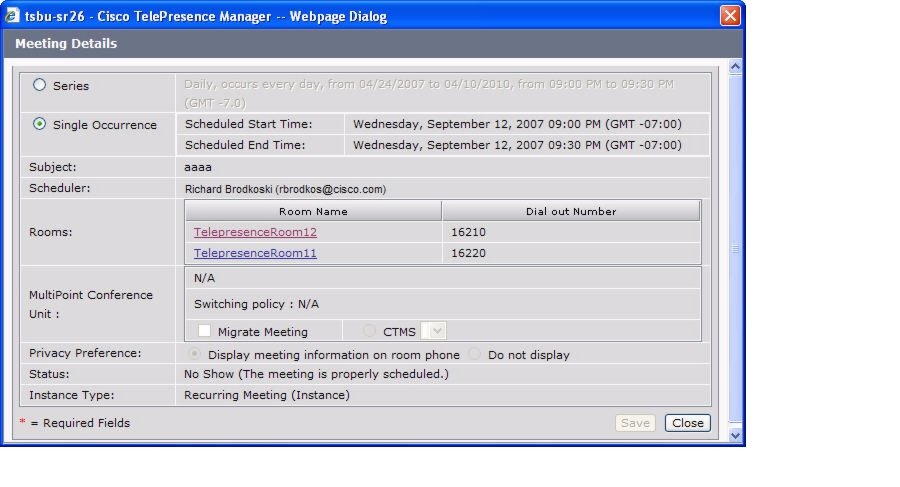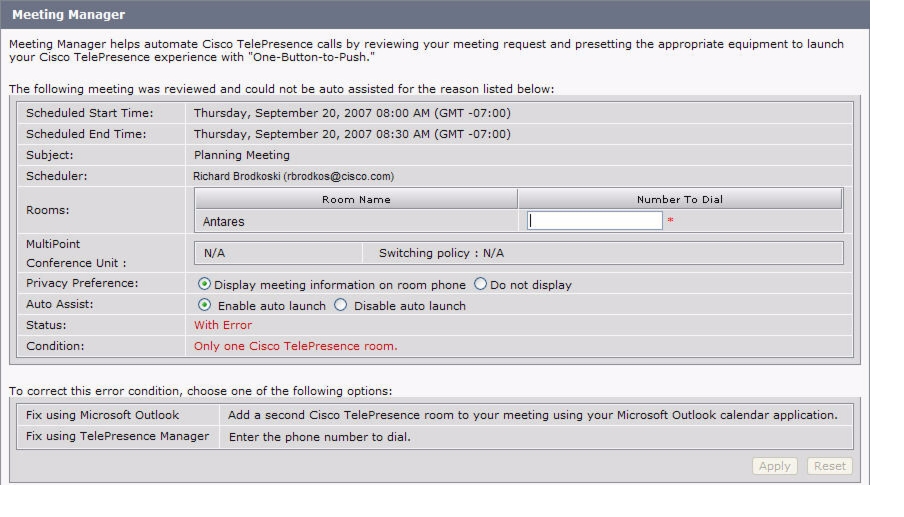

Table Of Contents
Using Meeting Manager
Revised: November 7, 2007, OL-13673-01First Published: November 27, 2006Cisco TelePresence meetings are scheduled between two or more conference rooms. Problems occur when it is detected that only one room was scheduled in Microsoft Outlook, or more than two rooms are scheduled when a MCU has not been configured. Cisco TelePresence Manager provides a Meeting Manager window where you can take steps to correct these problems. The link to the Meeting Manager window is embedded in the e-mail notification that is sent to the person who scheduled the meeting.
When the meeting starting time has passed, a single status window is displayed with the following message:
The meeting has already begun (its scheduled starting time has passed). No modification action is allowed.Figure 4-1 Expired Meeting Window
If the scheduled time for the meeting has not passed, the Meeting Manager displays an additional window that aids you in resolving the problem with the meeting.
Note
If the meeting start time has passed, the meeting organizer can still display the Resolution window shown in Figure 4-2, but may not enter a number to dial. Dialing out must be performed manually from the Cisco TelePresence room phone.
Figure 4-2 Meeting Manager Problem Resolution Windows
If the meeting was scheduled as a series, first select either the Series radio button to indicate that you want to revise the entire meeting series or the Single Occurrence radio button to revise just one occurrence of the meetings. When you click the Single Occurrence radio button, you must further select which meeting to revise by clicking Select Instance. A popup calendar appears with the scheduled meetings highlighted. Click the date to select the single-occurrence meeting you want to correct.
Table 4-1 and Table 4-2 describe the information and features available from the windows.
To register new or modified settings, click Apply.
Note
Before clicking the Apply button, check that the appropriate radio button is selected for a meeting scheduled as a series. Changes will be applied either to the entire series or to a selected instance of the meeting.
To restore the original settings, click Reset.

 Feedback
Feedback

